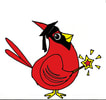|
|
|
|
|
|
|
|
|
|
Beethoven was born in the village of Bonn in Germany into a family of musicians. He later moved to Vienna, Austria where he spent the rest of his life. During Beethoven's lifetime, Vienna was the musical capital of Europe. It was there that he met Franz Joseph Haydn and Wolfgang Amadeus Mozart, classical composers who instructed and influenced Beethoven.
At the age of 16, Beethoven played the piano for Mozart, who predicted that the young man "would one day give the world something to talk about". Mozart's prediction certainly came true! Vienna was a music-loving city dazzled by Beethoven's piano virtuosity and his ability to improvise music. His first years in Vienna brought hard work, growing confidence and public praise. In fact, three noblemen committed themselves to give him an annual income on the condition that he stayed in Vienna. This was something new and different in the musical world. Beethoven was the first major composer who was never in the service of the aristocracy. |
|
|
|
|
By the time Beethoven was 29, he had begun experiencing a hearing loss. It was frustrating and caused him to not enjoy conversing with others. Beethoven enjoyed walking in the countryside, and he carried small notebooks and a pencil with him so people could communicate with him. He also used an ear trumpet, a bell-shaped device he could hold to his ear to help him hear. He would eventually go completely deaf. By the time he completed his ninth and final symphony, he was completely deaf! But his disability did not stop him from doing what he loved because he could hear the music inside his head.
|
|
Beethoven's Piano Sonata No. 14 in C-sharp minor is commonly known as the Moonlight Sonata. Written in 1801, Beethoven dedicated it to his pupil, Countess Giulietta Guicciardi. This piano sonata is one of his most popular compositions for the piano. A German music critic once compared it to the effect of moonlight shining on a lake at night.
|
|
|
|
|
As Beethoven's hearing weakened, this once brilliant pianist was forced to stop performing in public, but he insisted on conducting his orchestral works long after he could do it efficiently. His sense of isolation grew with his deafness. Despite this, and personal problems, Beethoven had a creative outburst after 1818 that produced some of his greatest works. These include piano sonatas and string quartets, a Mass for orchestra and choir, and his Ninth Symphony.
|
|
Beethoven's string quartets follow a form established by his former tutor, Haydn. Haydn had needed some music when most of his orchestra was on summer vacation, so he wrote a composition in the same form as a symphony, but for only four instruments: 2 violins, 1 viola and 1 cello. This became known as a string quartet. One of Beethoven's most popular quartets is in C Minor, Opus 18, No. 4.
|
|
|
|
